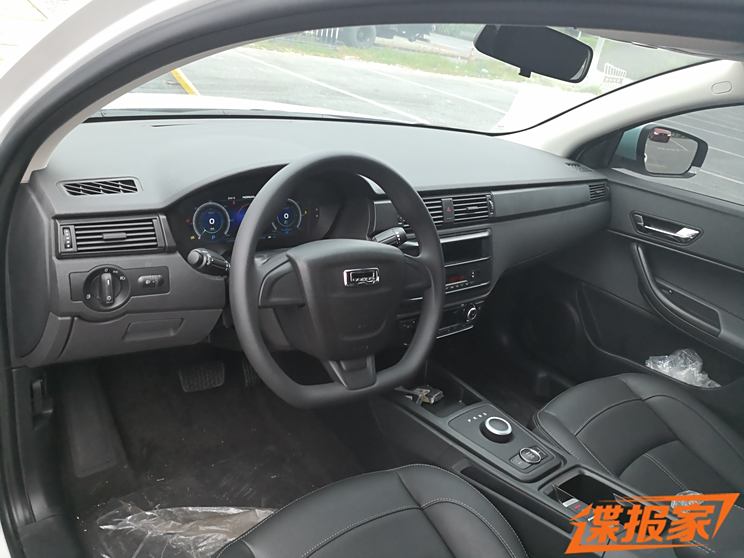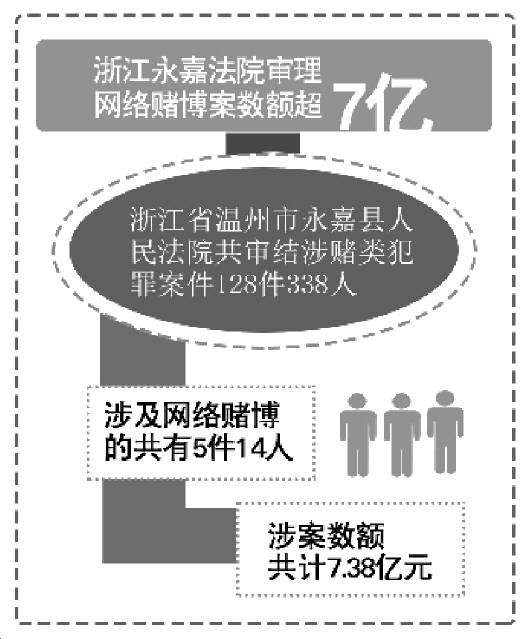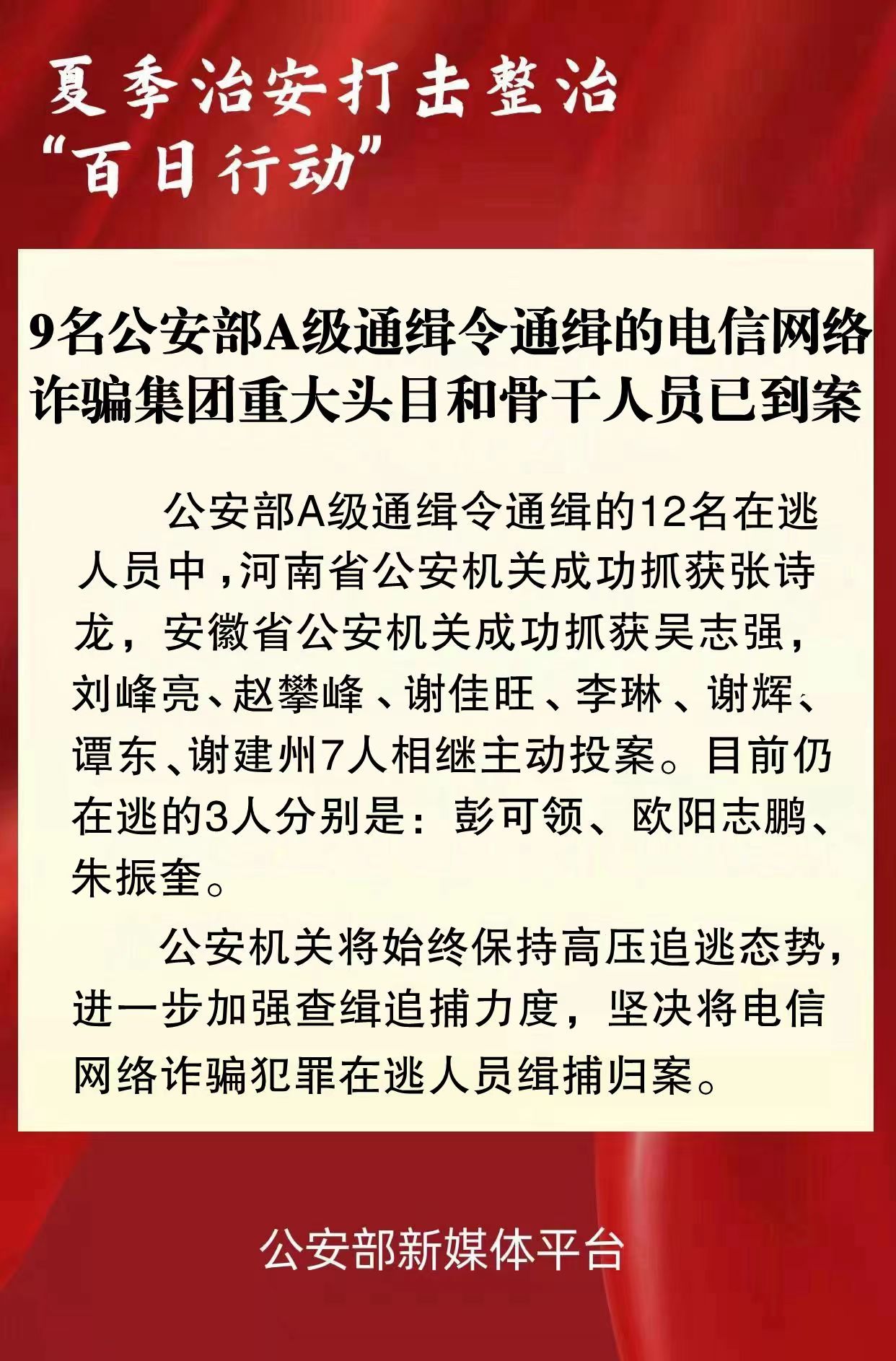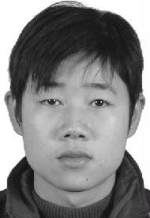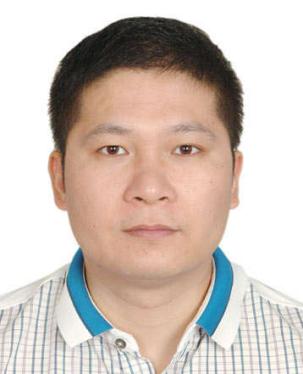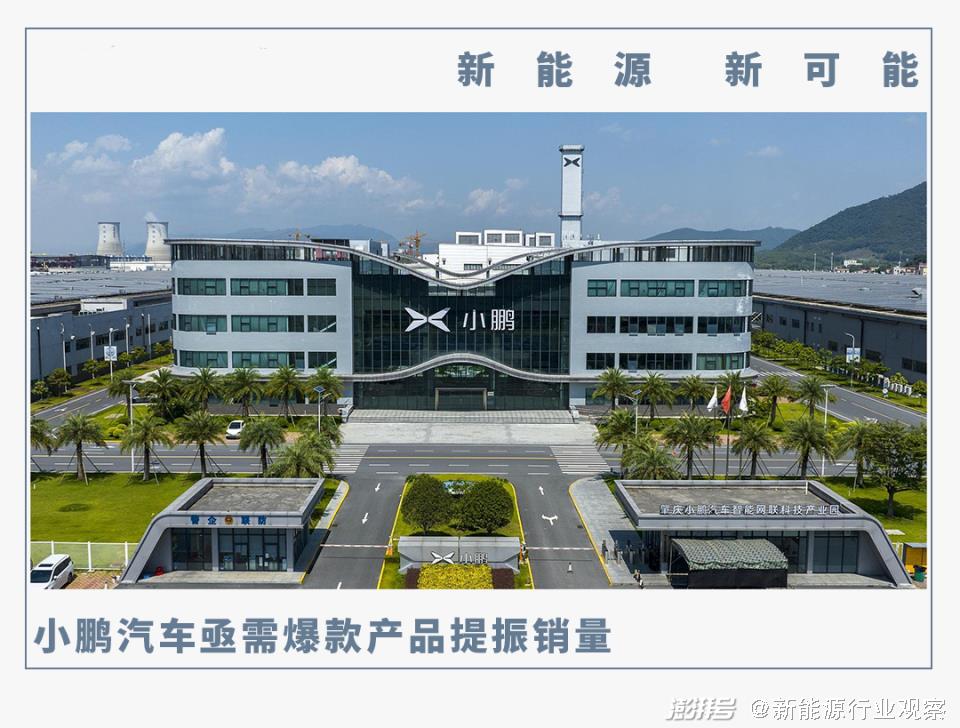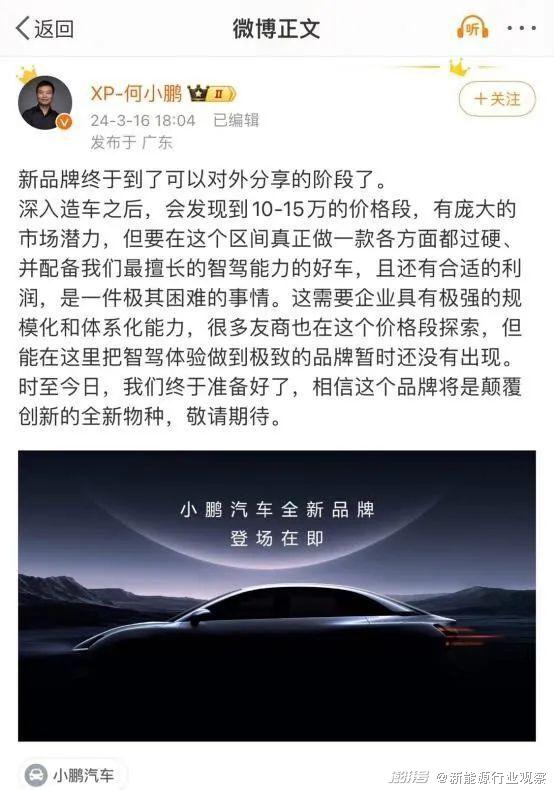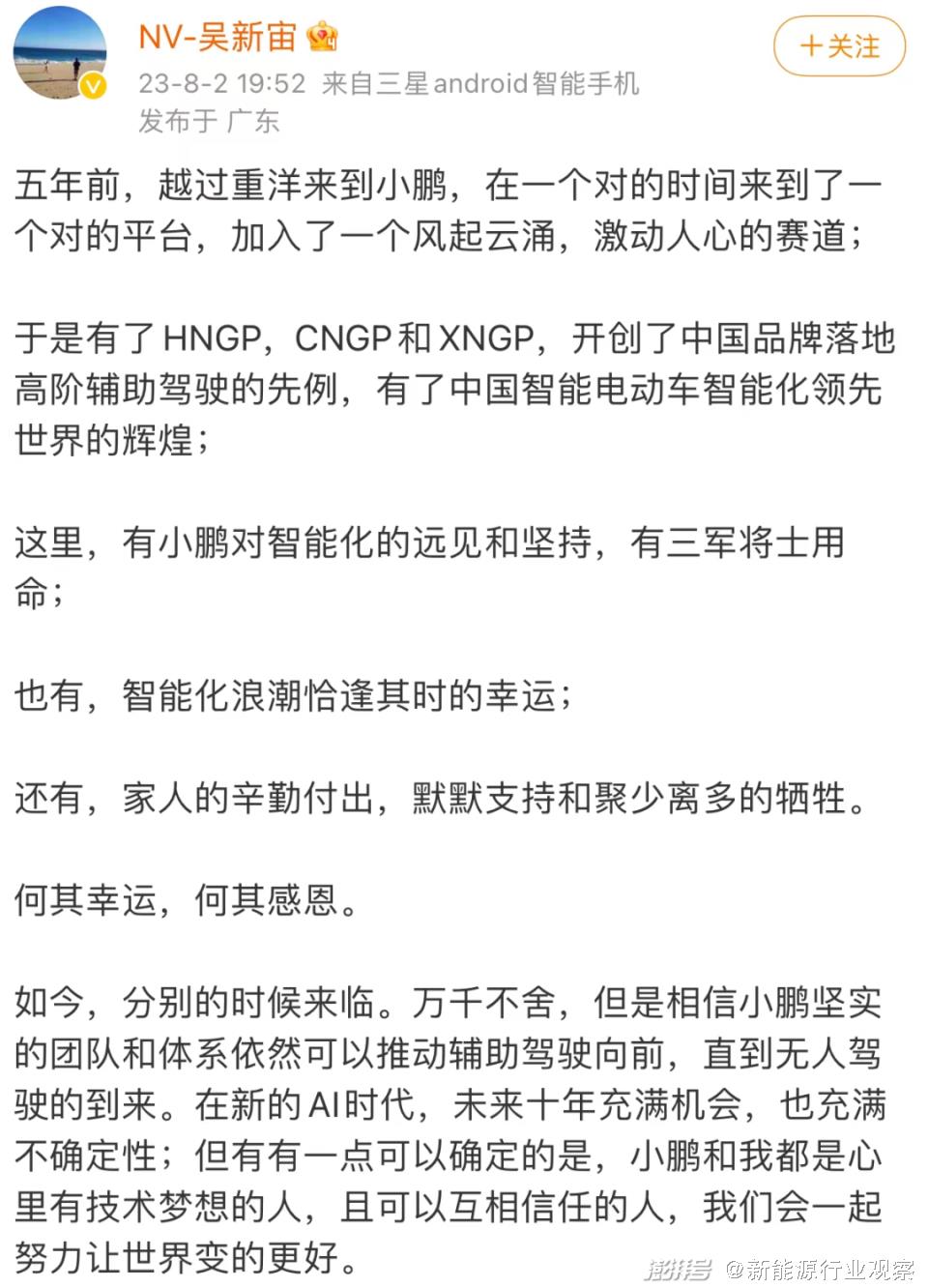Guo Fa [2021] No.27
People’s governments of all provinces, autonomous regions and municipalities directly under the Central Government, ministries and commissions and institutions directly under the State Council:
The "14 th Five-Year Plan" for the development of modern comprehensive transportation system is hereby printed and distributed to you, please implement it carefully.
the State Council
December 9, 2021
(This article has been deleted)
“Development planning of modern comprehensive transportation system in the 14 th Five-Year Plan
Transportation is a basic, leading and strategic industry in the national economy, an important service industry and an important part of the modern economic system, an important support for building a new development pattern and a solid guarantee for serving the people’s better life and promoting common prosperity. In order to speed up the construction of a powerful transportation country and build a modern comprehensive transportation system, this plan is formulated according to the 14th Five-Year Plan for National Economic and Social Development of People’s Republic of China (PRC) and the Outline of Long-term Goals in 2035, the Outline of Building a Powerful Transportation Country and the Outline of National Comprehensive Three-dimensional Transportation Network Planning.
Chapter I Development Environment
During the "Thirteenth Five-Year Plan" period, China’s comprehensive transportation system has made historic achievements, which can basically meet the requirements of economic and social development, and the people’s sense of gain and satisfaction has been significantly improved, which has provided a basic guarantee for achieving a comprehensive victory in poverty alleviation and achieving the goal of the first century, and played an important role in responding to the COVID-19 epidemic, strengthening transportation security, and promoting the resumption of work and production. In the past five years, China’s transportation infrastructure network has become increasingly perfect. The total mileage of the comprehensive transportation network has exceeded 6 million kilometers, and the "ten vertical and ten horizontal" comprehensive transportation corridors have been basically connected. The mileage of high-speed railways has doubled, and the coverage rate of cities with a population of more than one million has exceeded 95%. The coverage rate of expressways has exceeded 98% for cities with a population of more than 200,000, and the civil transportation airport has covered about 92% of prefecture-level cities. Rail transit in mega-cities has been accelerated, and the Hong Kong-Zhuhai-Macao Bridge and Daxing in Beijing have been The strategic support capacity has been continuously enhanced, the number of trains in China and Europe has increased rapidly, the Beijing-Tianjin-Hebei integrated transportation network and the comprehensive three-dimensional transportation corridor in the Yangtze River Economic Belt have been accelerated, and 100 key channels for traffic poverty alleviation have been basically completed. More than 1.47 million kilometers of rural roads have been built or rebuilt, and more than 33,000 villages have been built with buses. All qualified towns and villages have hardened roads and buses, and express outlets basically cover all towns and villages, and direct postal services have been realized. The quality of transportation services has been continuously improved, the proportion of high-quality travel of passengers has been continuously improved, and the normal flight rate has risen sharply.The container combined transport volume of molten iron has increased by more than 20% annually, and the express delivery business has quadrupled, ranking first in the world. New technologies and new formats are developing vigorously. A full range of Fuxing EMUs with completely independent intellectual property rights have been put into operation, C919 passenger planes have been successfully tested, and ARJ21 has been operated on a large scale in regional aircraft. The complete sets of technologies such as cross-sea bridges and tunnels, deep-water waterways and automated terminals rank among the top in the world, the level of ship construction has been continuously improved, and new formats such as network car, bike-sharing and network freight platform have developed rapidly and their governance capabilities have been continuously enhanced. The "streamline administration, delegate power, strengthen regulation and improve services" reform continued to deepen, key reform tasks in railway, airspace, oil and gas pipeline network and other fields were solidly promoted, toll stations at provincial boundaries of expressways were completely abolished, and traffic and logistics achieved remarkable results in reducing costs and increasing efficiency. The construction of green traffic and safe traffic has been steadily promoted. New energy vehicles account for more than half of the global total. The carbon dioxide emission intensity of operating trucks and ships has decreased by about 8.4% and 7.1% respectively. The safety level of civil aviation and railways has maintained the world’s leading position, and the number of major accidents and deaths in road transportation has decreased by about 75% and 69% respectively.
At the same time, the problem of unbalanced and insufficient development of China’s comprehensive transportation is still outstanding. The comprehensive transportation network layout is not balanced enough, the structure is not reasonable enough, and the connection is not smooth enough. There are obvious shortcomings in intercity and municipal (suburban) railways in key urban agglomerations and metropolitan areas. The proportion of multimodal transport of goods and combined transport of passengers is low, and the supply of customized, personalized and specialized transport services does not match the rapidly growing demand. The application depth and breadth of intelligent transportation technology need to be expanded, and some key core products and technologies are not capable of independent innovation. The transportation safety situation is still grim, and the supply chain support capacity of the industrial chain is insufficient. The task of green and low-carbon development is arduous, and the promotion and application of clean energy still need to be accelerated. The comprehensive transportation management system and mechanism need to be improved, and the institutional obstacles that restrict the free flow of factors still exist.
During the "Tenth Five-Year Plan" period, the situation faced by China’s comprehensive transportation development is more complicated and changeable. From an international perspective, the world today is experiencing a great change that has never happened in a century. A new round of scientific and technological revolution and industrial transformation is developing in depth. The COVID-19 epidemic has impacted the global industrial chain supply chain and the international logistics system, and economic globalization has encountered a countercurrent. Domestically, China has embarked on a new journey of building a socialist modern country in an all-round way, and profound changes have taken place in regional economic layout, land development and protection pattern, population structure distribution, consumption demand characteristics, and factor supply mode, which put forward new requirements for the development of comprehensive transportation system. The transportation industry has entered a critical period of perfecting facilities network and accurately filling shortcomings, promoting integration, improving service quality and efficiency, deepening reform and innovation, and transforming development mode. It is necessary to adapt to the requirements of land space development and protection, new urbanization construction and comprehensively promoting rural revitalization, optimize the development layout, strengthen convergence and integration, and improve the regional urban and rural comprehensive transportation network according to local conditions; We must adhere to innovation as the core, enhance the development momentum, promote the empowerment of new technologies and improve the quality and efficiency of transportation development; It is necessary to enhance the toughness of the comprehensive transportation system, adjust the development model, run the green development concept and low-carbon development requirements through the whole development process, and improve its own operational safety level and its ability to guarantee national strategic security; We should focus on satisfying people’s yearning for a better life and promoting common prosperity, change the development path, and promote equal emphasis on construction, management and transportation, balanced coordination of facilities and services, and deep integration of transportation and economic and social development.Promote the high-quality development of transportation with all-round transformation.
Chapter II General Requirements
The first section guiding ideology
Guided by Socialism with Chinese characteristics Thought of the Supreme Leader in the New Era, fully implement the spirit of the 19th National Congress of the Communist Party of China and its previous plenary sessions, base on the new stage of development, completely, accurately and comprehensively implement the new development concept, build a new development pattern, adhere to the people-centered development thought, take promoting high-quality development as the theme, deepen the supply-side structural reform as the main line, take reform and innovation as the fundamental driving force, and take meeting the people’s growing needs for a better life as the fundamental purpose. With the goal of speeding up the construction of a powerful transportation country, we should make overall plans for development and safety, improve the facility network with optimized structure and integrated connection, expand diversified and high-quality service supply, cultivate innovative-driven, integrated and efficient development momentum, strengthen the development mode of green security and open cooperation, and build a modern comprehensive transportation system to provide strategic support for building a socialist modern country in an all-round way.
Section 2 Basic Principles
Serve the overall situation and be a good pioneer. Adhere to people’s transportation for the people, give full play to the role of transportation as a pioneer in China’s modernization, continuously enhance its ability to guarantee the overall economic and social development and major national strategies, effectively support and lead regional coordinated development, rural revitalization and new urbanization, and provide transportation services that can better meet the needs of the people.
System advancement, convergence and integration. Adhere to the concept of system, reasonably determine the scale, technical standards and construction sequence of transportation infrastructure network, fill the gaps in the road network in the western region, optimize the network structure and function, scientifically and reasonably tap the potential of existing facilities, accurately fill the shortcomings of China Unicom, improve the allocation efficiency of transportation resources, and promote coordinated and integrated development across fields, regions and industries.
Driven by innovation, deepen reform. Pay attention to the application of deep empowerment of new technologies, improve the development level of digital and intelligent transportation, break down the institutional and institutional obstacles that restrict the high-quality development of transportation, promote the unified, open and orderly competition of transportation market, and promote transportation to improve efficiency, expand functions and increase kinetic energy.
Green transformation and safe development. Implement the requirements of peak carbon dioxide emissions and carbon neutrality, implement the overall national security concept, strengthen the economical and intensive use of resource elements, promote the green and low-carbon transformation of transportation, strengthen the construction of operational safety and emergency response capabilities, improve the level of international interconnection and transportation security, and ensure the safety of the supply chain of the industrial chain.
Section III Development Goals
By 2025, integrated transportation will basically achieve integrated development, and substantial breakthroughs will be made in intelligence and greening, and comprehensive capabilities, service quality, operational efficiency and overall benefits will be significantly improved, and transportation development will move towards world-class level.
The network of facilities is more perfect. The utilization rate of the main skeleton capacity of the national comprehensive three-dimensional transportation network has been significantly improved. With the "eight vertical and eight horizontal" high-speed railway as the main skeleton, the regional connecting lines of high-speed railways are connected, supplemented by some intercity railways with trunk functions, and the coverage rate of cities with a speed of 250 kilometers and above is over 95%, and the bottleneck sections of ordinary-speed railways are basically eliminated. The main lines of the national expressway network, consisting of 7 capital radial lines, 11 north-south longitudinal lines and 18 east-west transverse lines, as well as regional ring lines, parallel lines and tie lines, are basically connected, and the quality of ordinary highways is further improved. A modern airport system with perfect layout and complete functions has basically taken shape. The level of specialization and modernization of ports and docks has been significantly improved, and important progress has been made in the construction of inland high-grade waterway networks. The transfer and reloading efficiency of the comprehensive transportation hub has been further improved. The integrated transportation network of key urban agglomerations and the one-hour commuting network of metropolitan areas have been accelerated, and the national highways along the border are basically connected.
Transportation services are more efficient. The quality of transportation services has been steadily improved, passenger "one-stop" and freight "one-single-system" services have become more popular, customized, personalized and professional transportation service products have become more abundant, urban traffic congestion and "parking difficulties" have been continuously alleviated, transportation services in rural and border areas have been more guaranteed, and qualified villages have achieved full coverage of express delivery services. The international transportation service network facing the world is more perfect, and the development quality of China-Europe trains has steadily improved.
Technology and equipment are more advanced. The fifth-generation mobile communication (5G), Internet of Things, big data, cloud computing, artificial intelligence and other technologies are deeply integrated with transportation. Significant progress has been made in the construction of new infrastructure in the transportation field, the digitization rate of transportation infrastructure has been significantly improved, and data sharing and platform integration and optimization have made substantial breakthroughs. The popularization and application of autonomous advanced technology and equipment will be accelerated, and the Beidou system will fully cover key areas of transportation, and the standardization rate of transportation equipment will be greatly improved.
Security is more reliable. The traffic facilities are durable and reliable, the operation is safe and controllable, the preventive measures are in place, and the intact rate of safety facilities continues to improve. Cross-departmental and cross-disciplinary safety risk prevention and control systems and emergency rescue systems have been further improved, and the incidence of serious accidents has been further reduced. The transportation safety of main channels and the transportation safety of grain, energy, ore and other materials are more secure, and the security guarantee capability of international logistics supply chain continues to improve.
The development model is more sustainable. The green production and lifestyle in the field of transportation has gradually taken shape. The proportion of railway and water transport undertaking bulk cargo and medium-long distance cargo transportation has steadily increased, the proportion of green travel has obviously increased, clean and low-carbon transportation tools have been widely used, the energy consumption per unit turnover has obviously decreased, the proportion of green construction of transportation infrastructure has been significantly improved, the utilization efficiency of resource elements has been continuously improved, and the intensity of carbon emission has steadily decreased.
The governance capacity is more complete. Laws, regulations and standards in the fields of integrated development of various modes of transportation, investment and financing of transportation infrastructure, management, operation and maintenance have been improved, the degree of integrated development of comprehensive transportation has been continuously improved, the market-oriented reform has been deepened, the diversified investment and financing system has been improved, and a new supervision mechanism based on credit has been accelerated.
Looking forward to 2035, a modern, high-quality national comprehensive three-dimensional transportation network that is convenient, smooth, economical, efficient, safe and reliable, green, intensive, intelligent and advanced will be basically completed. The "National 123 Travel Transportation Circle" (1 hour commute in metropolitan area, 2 hours access in urban agglomeration and 3 hours coverage in major cities across the country) and the "Global 123 Express Freight Flow Circle" (1 day delivery in China, 2 days delivery in neighboring countries and 3 days delivery in major cities around the world).
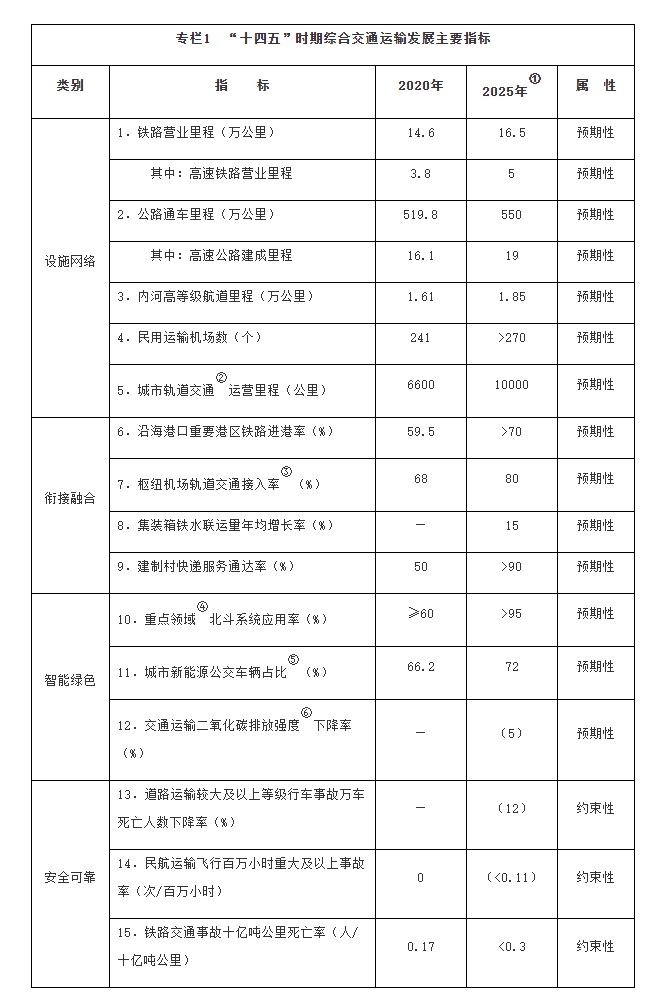

Chapter III Building a High-quality Integrated Three-dimensional Traffic Network
According to the main skeleton layout of "6 axes, 7 corridors and 8 channels" of the national comprehensive three-dimensional transportation network, we will build and improve an integrated transportation network with "10 vertical and 10 horizontal" comprehensive transportation corridors as the backbone, integrated transportation hubs as the fulcrum, and multi-level networks of express network, trunk network and basic network as the support, accelerate the upgrading and efficiency improvement of existing networks, focus on accurately filling the network shortcomings in the central and western regions, steadily improve the access depth, smooth the network microcirculation, and sketch out the "traffic meticulous painting" of beautiful China.
The first section to improve the comprehensive transportation corridor
Optimize the layout of comprehensive transportation corridor. Build a comprehensive, three-dimensional, large-capacity and fast traffic spindle, build a multi-mode, multi-channel and convenient traffic corridor, and strengthen the coordination and connection between the spindle and the corridor. Improve the functions of Beijing-Shanghai, Shanghai-Kunming, Guangzhou-Kunming, Land Bridge, Beijing-Hong Kong-Macao, Heihe-Hong Kong-Macao, Ejina-Guangzhou, Qingdao-Lhasa, Xiamen-Kashgar, etc., promote the construction of the section to be connected and the expansion and transformation of the bottleneck section, and smooth the passages in coastal and inland areas. Promote the optimal allocation and organic connection of various modes of transportation resources in the channel.
Strengthen the construction of strategic backbone channels. We will promote the construction of the Xinjiang-Tibet passage, expand the capacity of the four inline main passages of Gan Xin, Qingxin, Qinghai-Tibet and Sichuan-Tibet, steadily promote the construction of sichuan-tibet railway, accelerate the preliminary work of the Hetian-Shigatse section of the Xinjiang-Tibet railway, start the construction of key sections in a timely manner, advance the preliminary work of the Yunnan-Tibet railway in an orderly manner, closely optimize the air route network layout, and build a multi-directional communication passage layout. Smooth the channel along the river, speed up the construction of high-speed railway along the river, and optimize the function of comprehensive transportation channel along the river with high-grade waterway, trunk railway and expressway as the backbone. Upgrade the coastal channel, improve the railway channel capacity, promote the expansion and transformation of busy sections of expressways, improve the overall efficiency of port channels, and build a large-capacity and high-quality transportation corridor. Run through the border passages, upgrade and transform ordinary national and provincial trunk lines, promote the construction of railways along the border in key directions, and improve the level of safety and security. We will build a new land and sea passage in the west, give play to the backbone role of railways in land transportation and the gateway role of ports in maritime transportation, strengthen the three passages in the east, middle and west, form a large-capacity main passage, and connect international transportation passages.
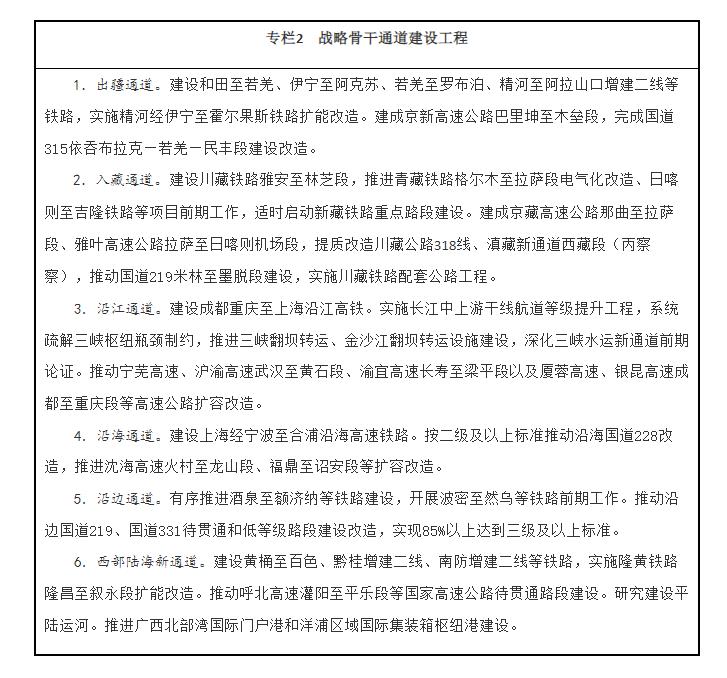
Section 2 Construction of Multi-level Integrated Comprehensive Transportation Hub
Build a comprehensive transportation hub cluster. We will build international comprehensive transportation hub clusters such as the Beijing-Tianjin-Hebei, Yangtze River Delta, Guangdong-Hong Kong-Macao Greater Bay Area and Chengdu-Chongqing regions, and enhance the global interconnection level and radiation level. Cultivate a number of comprehensive transportation hub clusters that radiate areas and connect the whole country, rationally organize the cluster service network, and improve the coordination efficiency of hub cities within the cluster.
Optimize the functions of comprehensive transportation hub cities. Improve the global connectivity level and resource allocation capacity of international comprehensive transportation hubs, and enhance the international portal function of some hubs. Optimize the passenger and cargo transfer facilities, collection and distribution network and quick connection system between passenger stations in the national comprehensive transportation hub. Strengthen the connection and transshipment capacity of regional comprehensive transportation hubs and develop port hubs. Strengthen the functional complementarity, facility connectivity and operational coordination among comprehensive transportation hub cities at different levels.
Improve the comprehensive passenger transport hub system. Optimize the layout of passenger stations and urban public transportation hubs, encourage the layout of the same station, and strengthen the effective connection with the urban transportation system. For the comprehensive passenger transport hub with great potential demand for transfer, land and space for connecting passages should be reserved. Promote the layout of three-dimensional transfer facilities for new comprehensive passenger transport hubs, encourage transfer on the same platform, implement the convenient transformation of existing hub transfer facilities, and promote convenient transfer between major modes of transportation. Integrate the information resources of different modes of transportation connected to the comprehensive passenger transport hub, and strengthen the docking of data, time and capacity. Promote the integration of comprehensive passenger hub stations and cities, explore the establishment of a benefit-sharing mechanism for hub development, promote unified planning and comprehensive development of hub and surrounding areas, and strengthen the coordination of development timing and the sharing of service functions.
Build a comprehensive freight hub system. Give priority to the use of existing logistics parks and freight stations and other facilities, plan and build a comprehensive freight hub with efficient integration of various modes of transportation, and guide the centralized layout of functional facilities such as cold chain logistics, postal express delivery and distribution. Improve the railway and highway network of freight hub, speed up the construction of multimodal transport facilities, and promote the capacity expansion and transformation of port transshipment facilities. Implement the capacity improvement project of postal express hub, strengthen the construction of universal postal service and express processing center, and strengthen overall planning with railways, highways, civil aviation and other hubs. Promote the construction of logistics hubs in about 120 countries.
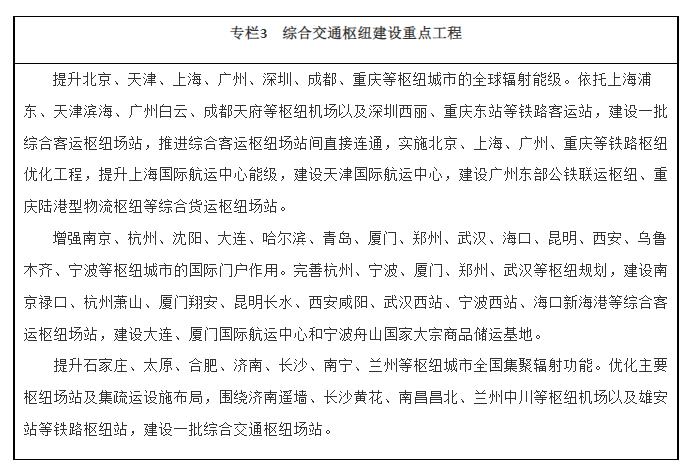
Section III Optimization of Integrated Three-dimensional Traffic Network
We will build a fast network with high-speed railways, national highways and civil aviation as the main body, improve the trunk network with general-speed railways, provincial highways and port waterways as the main body, and improve the support capacity of the basic network.
Build a modern railway network. Adhere to paying equal attention to passenger and cargo, building and rebuilding simultaneously, and coordinating the development of high-speed and general-speed railways, speed up the construction of general-speed railways and the expansion and transformation of existing railways, focus on eliminating trunk bottlenecks, promote the capacity reinforcement of existing railways with tight transportation capacity, and accelerate the improvement of railway network coverage in the central and western regions. Strengthen the construction of development railways and feeder railways in resource-rich areas and relatively densely populated poverty-stricken areas. Promote the construction of the main channel of high-speed railway, improve the transportation capacity of important channels along the Yangtze River, along the coast, in Hunan, in Beijing and Kunming, and the auxiliary channel of Beijing-Shanghai high-speed railway, and build regional connecting lines in an orderly manner. Comprehensively use new technical means, reform and innovate the management mode, and improve the overall operating efficiency of the railway network. Overall consideration of transportation demand and benefits, rational planning and construction of railway projects, strict control of high-speed railway parallel line construction.
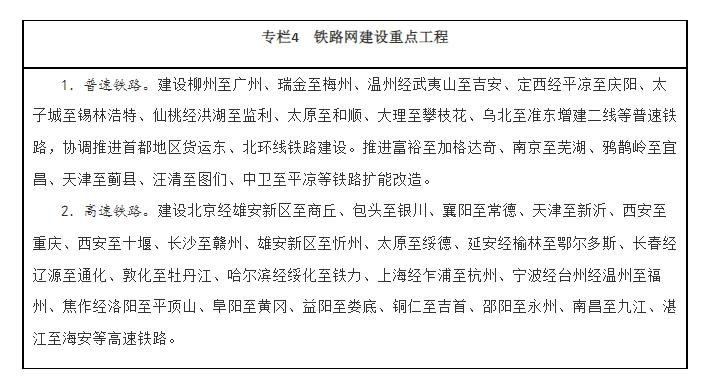
Improve the structure and function of highway network. Improve the quality of the national expressway network, implement the expansion and transformation of busy and congested sections of national expressways such as Beijing-Shanghai, Beijing-Hong Kong-Macao, Beijing-Kunming, Changshen, Shanghai-Kunming, Lianhuo, Baomao, Fuyin, Quannan and Guangkun, and accelerate the construction of parallel lines, tie lines and sections to be connected. Reasonably guide the orderly development of local expressways. Accelerate the upgrading of low-grade sections of ordinary national highways, increase the proportion of second-class and above ordinary national highways in the western region to 70%, achieve effective coverage of important ports, hubs, industrial parks and tourist attractions, and strengthen the allocation of safety facilities. We will improve the high-quality development system of "Four Good Rural Roads", carry out in-depth demonstration and creation, realize that the proportion of villages and towns with Grade III and above roads will reach about 85%, promote natural villages (groups) with large population to access hardened roads, promote the construction of two-lane roads in established villages and widen and transform rural narrow roads according to local conditions, and strengthen the connection between rural roads and trunk roads and main roads in villages. Promote the construction of convenience facilities such as crossing bridges.
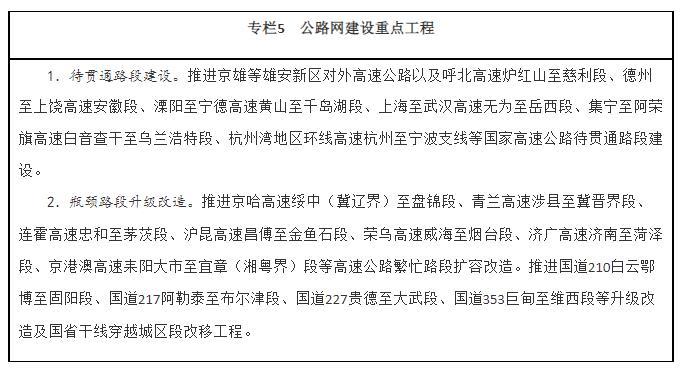
Optimize the smooth network of water transport facilities. Build a world-class port group in Beijing-Tianjin-Hebei, Yangtze River Delta and Guangdong-Hong Kong-Macao Greater Bay Area, support Shandong to build a world-class marine port, promote the integrated development of coastal ports in Northeast China, optimize the functional layout of ports, and promote resource integration and sharing. We will promote the construction of public facilities such as specialized docks and inbound and outbound waterways in coastal ports in an orderly manner. Appropriately advance the construction of loading, unloading, storage and transit facilities for grain, energy and mineral resources, and promote the planning and construction of coastal LNG terminals along the river. Improve the level of specialization and scale of inland ports, and rationally concentrate the layout of specialized terminals such as containers, coal, iron ore and commercial vehicles. Strengthen the expansion and upgrading of inland high-grade waterway and smooth construction, improve the inland high-grade waterway network of the Yangtze River, Pearl River, Beijing-Hangzhou Canal and Huaihe River, further enhance the sea-going capacity of the high-grade waterway network in the Pearl River Delta, and comprehensively strengthen the construction of substandard sections of the Yangtze River Delta and Pearl River-Xijiang high-grade waterway networks. Promote the construction of important tributary waterways, reservoir and lake waterways, inland river tourist waterways and convenience docks.
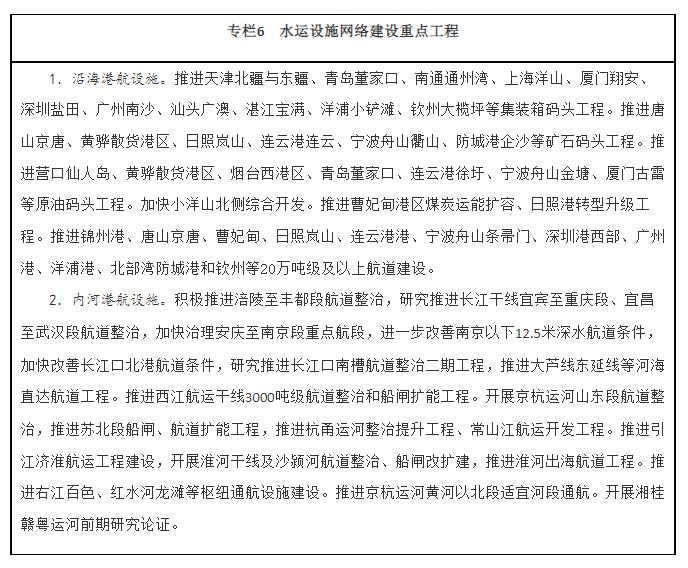
Expand the coverage of aviation network. Promote the coordinated development of regional airport groups and build world-class airport groups such as Beijing-Tianjin-Hebei, Yangtze River Delta, Guangdong-Hong Kong-Macao Greater Bay Area and Chengdu-Chongqing. Timely start the reconstruction and expansion project of hub airport with tight capacity and strengthen the comprehensive support capacity of hub airport. Rationally encrypt the airport layout, steadily build regional airports and specialized freight hub airports, and improve the freight capacity and utilization rate of comprehensive airports. We will promote the planning and construction of general airports in an orderly manner, build a regional short-distance transportation network, and explore the integrated development of general aviation, low-altitude tourism, emergency rescue, medical rescue and police aviation. Optimize the route network, strengthen the construction of military and civilian air traffic control infrastructure, and popularize and apply new air traffic control technologies.
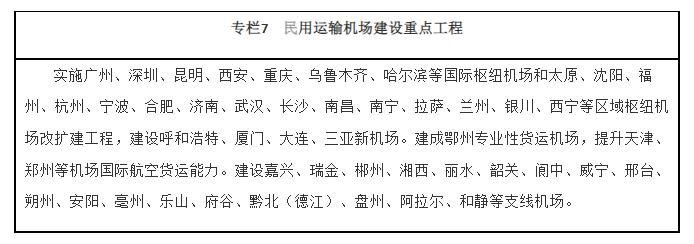
Strengthen efficient interconnection of oil and gas pipelines. Improve the four major oil and gas import channels in the northeast, northwest, southwest and offshore. Accelerate the construction of national trunk natural gas pipelines, improve the layout of crude oil and refined oil pipeline networks, and promote the management of hidden dangers of old pipelines in northeast, northwest and southwest regions. Promote the interconnection of oil and gas pipelines and the construction of branch pipelines, expand the coverage of natural gas pipelines in cities and counties and radiate to towns and villages along the line where conditions permit.
The fourth quarter to strengthen the integration of convergence
Accelerate the resolution of bottlenecks that restrict people’s beautiful travel and efficient circulation of goods, and strengthen the organic connection of comprehensive transportation networks. Open up the inter-provincial highway sections to be connected, strengthen the effective connection between trunk roads and urban roads, and promote the upgrading of the transit sections of trunk roads and the bottleneck sections entering and leaving the city in densely populated areas. Strengthen the efficient connection between hub airport and rail transit to make the transfer more convenient. Strengthen the construction of collection and distribution facilities such as entering the port area, the park area, the factory area and the large-scale agricultural product base, and accelerate the railway to enter the key port areas of the port and large industrial and mining enterprises, logistics parks and key material reserves. Considering the efficient utilization of resources, the protection of ecological environment and the safety of flood control and navigation as a whole, we will build a river-crossing and sea-crossing channel in an orderly manner where all modes of transportation share channel resources. Promote the interconnection of large-scale comprehensive passenger transport hubs in megacities through rail transit. Accelerate the interconnection of integrated freight hubs with close ties through tie lines or dedicated channels.
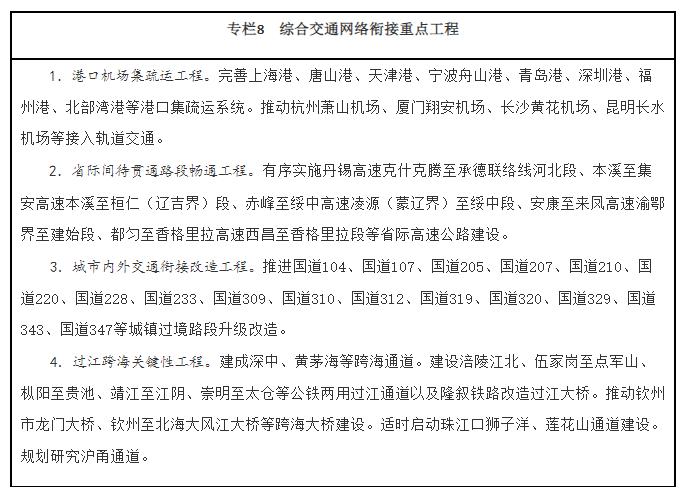
Section 5 Strengthening Infrastructure Maintenance
Promote the implementation of life cycle maintenance, strengthen normalized preventive maintenance, scientifically implement maintenance operations, strengthen quality inspection and evaluation of maintenance projects, strengthen supervision and evaluation of maintenance management, and improve the service life of infrastructure. Strengthen the maintenance and management of public facilities such as bridges and tunnels, navigation structure, port anchorage and runway apron. Increase the promotion of new maintenance technologies, build a scientific observation network for the long-term performance of transportation infrastructure, encourage automated and information-based inspections, improve the scientific decision-making level of management and maintenance, and promote the mechanization and standardization of maintenance. Strengthen the integrated management of railway comprehensive maintenance. Develop and standardize the highway maintenance market, and gradually increase the purchase of maintenance services from the society. Deepen the reform of rural highway management and maintenance system and fully implement the rural highway length system. Improve the responsibility system and working mechanism of bridge maintenance management. Improve the channel normalization maintenance mechanism and promote the construction of channel maintenance base and supporting facilities and equipment.
The fourth chapter tamps the basic support of coordinated development between urban and rural areas.
Give full play to the supporting and leading role of transportation in the development and protection of land space, and enhance the service guarantee ability for implementing major regional strategies, promoting coordinated regional development, and comprehensively promoting rural revitalization.
Section 1 Major Strategies for Serving the Region Effectively
Build a multi-node, grid-like and full-coverage Beijing-Tianjin-Hebei integrated comprehensive transportation network, basically build Beijing-Tianjin-Hebei on the track, build xiong’an new area’s external transportation network with high standards and high quality, strengthen the interconnection between Beijing’s sub-center and the central city, Langfang North three counties’ transportation infrastructure, and strengthen the transportation security of Beijing Winter Olympics and Winter Paralympics. Relying on the golden waterway of the Yangtze River, the overall design will promote the construction of the comprehensive transportation system in the Yangtze River Economic Belt, strengthen the freight capacity of high-speed rail and railway along the Yangtze River, make every effort to open up the inter-provincial road sections to be connected, and improve the development level of river-sea combined transport and iron-water combined transport. Promote the interconnection of Guangdong-Hong Kong-Macao Greater Bay Area’s infrastructure, optimize the allocation of shipping and aviation resources, strengthen the transportation links between Hong Kong and Macao and the mainland, and support Hong Kong in upgrading its status as an international shipping and aviation hub. Promote the higher quality integrated development of transportation in the Yangtze River Delta region, speed up the efficient connection and organic integration of external transportation, intercity transportation and metropolitan transportation, jointly promote the integrated development of port, shipping and maritime affairs, promote Shanghai, Jiangsu, Zhejiang and Anhui provinces to jointly build a global shipping hub, accelerate the upgrading of the function of Jiangsu tongzhou bay River-Sea Linkage Demonstration Zone, and create a new seaport for container transportation in the Yangtze River. We will build a modern comprehensive transportation system that is smooth in Hainan Island, connected by land and island, and accessible globally, build a modern comprehensive transportation hub, and steadily promote the construction of a free trade port. Build a green, safe and convenient comprehensive transportation network in the Yellow River basin and strengthen the construction of cross-regional large passages.
Section 2 Supporting and Leading Regional Coordinated Development
Fill the shortcomings of the transportation infrastructure network in the western region, improve the coverage of trunk railways, the smoothness of trunk roads and the equalization of rural roads, build a one-hour transportation network in the economic circle of Chengdu and Chongqing, and smoothly flow out of Sichuan and comprehensive transportation corridor in many directions. Improve the overall efficiency of the transportation infrastructure network in Northeast China, further smooth the external channels, and promote the integration of coastal inland and border areas. We will promote the construction of inland open corridors in the central region, enhance the function of connecting the east with the west and connecting the south with the north, and further consolidate and enhance the status of an integrated transportation hub. Build a modern comprehensive transportation system in the eastern region, speed up the construction of regional integrated transportation network, improve the capacity of key transportation channels and the radiation level of comprehensive transportation hubs, and realize the optimization and upgrading of transportation. Improve the external access capacity of underdeveloped areas, old revolutionary base areas and border areas, expand the depth of network access, fill the shortcomings of infrastructure in ecologically degraded areas, and strengthen the construction of transportation infrastructure to ensure the transformation and development of resource-based areas and the industrial transformation and upgrading of old industrial bases.
Section III Tamping the Rural Area and Revitalizing the Traffic Foundation
Coordinate the needs of new urbanization and rural revitalization and development, and gradually improve the level of urban and rural transportation integration. Consolidate and expand the achievements of hardening roads in qualified towns and villages, promote more traffic construction projects to enter villages and households, and encourage the integrated development of rural roads with industrial parks, tourist attractions and key rural tourism villages. Promote the development of rural passenger and postal integration, continue to promote the construction of township transportation service stations, integrate transportation, postal services, express delivery, supply and marketing, e-commerce and other resources, and build a new mode of rural transportation development with intensive functions, convenience and efficiency. Consolidate the achievements of establishing village bus service, improve the operational safety and service level of rural passenger transport, strengthen the safety supervision of rural passenger transport, and promote the construction of a long-term and stable development mechanism for rural passenger transport. Promote the integration of rural logistics into the modern circulation system, speed up the penetration of county rural e-commerce system and express logistics distribution system, build a convenient and efficient two-way channel for industrial products to go to the countryside and agricultural products to leave the village, and build a rural logistics service brand.
Section IV Strengthening the Construction of Border Traffic Facilities
Serve the construction of the urban system along the border, focus on roads and airports, vigorously improve the transportation conditions in the border areas, and enhance the population gathering capacity of the border towns. Make overall plans to promote the construction of national and provincial trunk highways and rural highways in border areas, comprehensively improve the main skeleton of national trunk highways, promote the construction of parallel roads along the border and upgrade the low-grade highways, speed up the construction of roads that reach the border, and form a road network along the border with clear hierarchy and reasonable structure as soon as possible. We will steadily promote the construction of airports in border areas, build a multi-level aviation network, and expand the coverage of air transport services. Strengthen the capacity of railway passages behind Tongjiang, Erenhot, Alashankou, Horgos, Ruili, Mohan and other ports. Strengthen the construction of postal facilities in the border villages to achieve universal coverage of postal services.
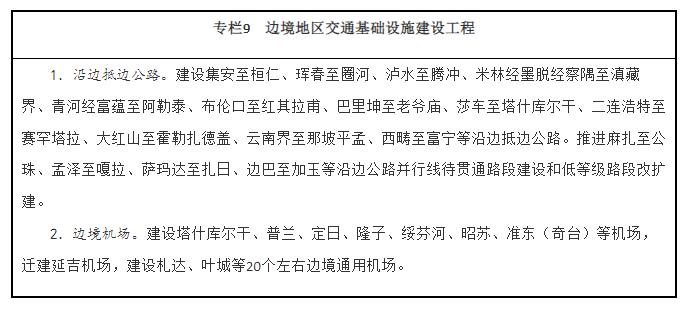
Chapter V Promoting Traffic Modernization of Urban Agglomeration and Metropolitan Area
We will further promote the new urbanization with people as the core, improve the transportation network by layers and classifications, strengthen interconnection and integration, promote the coordinated operation of transportation in urban agglomerations, metropolitan areas and cities, promote the modernization of transportation in urban agglomerations and metropolitan areas, and improve the quality of urbanization development.
Section 1 Construction of Integrated Transportation Network of Urban Agglomeration
Strengthen the construction of intercity transportation in key urban agglomerations. Around the Beijing-Tianjin-Hebei, Yangtze River Delta, Guangdong-Hong Kong-Macao Greater Bay Area, Chengdu-Chongqing, the middle reaches of the Yangtze River and other urban agglomerations, with rail transit and expressways as the backbone, the function of intercity transportation channels will be enhanced, the rapid direct connection of core cities will be strengthened, and a multi-node and networked intercity transportation network will be built to achieve two-hour access between major cities in the urban agglomeration. We will promote the construction of intercity railways and municipal (suburban) railways in Beijing-Tianjin-Hebei, Yangtze River Delta and Guangdong-Hong Kong-Macao Greater Bay Area as a whole, promote the construction of intercity railways and municipal (suburban) railways in Chengdu-Chongqing area in an orderly manner, strengthen the integration with high-speed railways and general-speed railways, and expand the effective coverage of towns with a population of more than 50,000.
Promote the construction of intercity transportation in other urban agglomerations in an orderly manner. Improve the function of main intercity corridors in Shandong Peninsula, coastal areas of Guangdong, Fujian and Zhejiang, Central Plains, Guanzhong Plain, Beibu Gulf and other urban agglomerations, and promote the construction of main intercity corridors in urban agglomerations such as Harbin-Changchun, central and southern Liaoning, central Shanxi, central Guizhou, central Yunnan, Hubao Eyu, Lanzhou-Xining, Ningxia along the Yellow River and northern slope of Tianshan Mountain. We will build a multi-level rapid transportation network that effectively connects large, medium and small cities and small towns, and actively promote the use of existing railway surplus capacity to run intercity trains.
Section 2: Building Commuting Traffic Network in Metropolitan Area
Create a metropolitan area on the track. Build a multi-level rail transit network in the metropolitan area, promote the integration of trunk railways, intercity railways, regional (suburban) railways and urban rail transit, and rationally promote the cross-line operation of rail transit. Actively use trunk railways and intercity railways to provide commuter services, make full use of the surplus capacity of existing railways to operate regional (suburban) trains, increase the number of train stops and the frequency of stops at important passenger distribution centers, encourage bus operation during peak hours, and improve the quality of commuter services. Explore the extension of rail transit in the central city of key metropolitan areas to surrounding cities (towns) in a reasonable format.
Improve the multi-level road traffic network. Reasonably encrypt the expressway passage, and plan and construct the metropolitan ring road and the city ring road according to local conditions. Scientific layout and construction of refueling stations, bus stations and parking facilities. Actively promote the extension of urban bus lines to surrounding towns and functional nodes, encourage adjacent cities (towns) in metropolitan areas to operate buses, and carry out the transformation of passenger lines into buses.
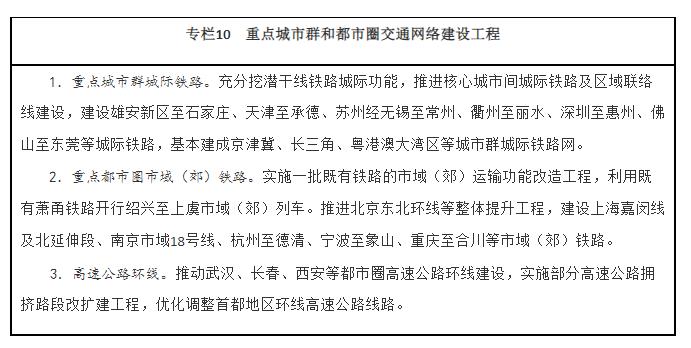
Section 3 Building a Modern Urban Transportation System
Improve urban transportation infrastructure. Scientifically plan and build an urban comprehensive transportation system, speed up the development of fast trunk traffic, daily distributed traffic and green slow traffic, and achieve smooth connection. Strengthen the construction of micro-circulation and branch network in big cities, optimize the proportion of fast, trunk, secondary trunk and branch roads, speed up the construction and transformation of urban branch streets and abnormal intersections, optimize the supply of parking facilities by classification and zoning, improve the utilization efficiency and refined service level of parking resources, and strengthen resource sharing and wrong opening. Reasonably increase the density of road network in small and medium-sized cities, make full use of parking resources, moderately increase parking facilities, and standardize parking order. Fill in the shortcomings of urban roads and highway passenger station facilities in counties, county-level cities and mega-towns, steadily promote the construction of public parking facilities in old communities, hospitals, schools, commercial gathering areas and other areas, and moderately increase flexible and convenient road shuttle bus stations. Build a safe, continuous and comfortable urban slow traffic system, improve the continuity and smoothness of non-motor vehicle lanes and trails, increase non-motor vehicle parking facilities in commercial office areas, public transport stations, tourist attractions and other places, and improve the conditions of pedestrian crossing facilities.
Create a multi-mode convenient public transportation system. In-depth implementation of public transport priority development strategy, continue to deepen the construction of national transit metropolis. Super-large cities should build a rapid transit network with rail transit as the backbone, develop urban rail transit scientifically and orderly, and promote the integrated development of rail transit, regular bus and slow traffic network. Large cities will form an urban public transport system with ground bus as the main body, and develop bus rapid transit in important passenger corridors. Small and medium-sized cities improve the operational efficiency of urban public transport, and gradually improve the site coverage and service level. Promote the linkage control of urban road traffic lights to ensure the priority of public transport; Promote the release of real-time operation information of public transportation on electronic bus stop signs and Internet information platforms, optimize transfer guidance signs, popularize services such as traffic card and mobile payment, and improve the attractiveness of public transportation.
Chapter VI Expanding the Supply of Quality Transportation Services
Comply with people’s new expectations for a better life, make overall consideration of the different development trends and stage characteristics of passenger transport and cargo transport, give consideration to basic needs and diversified needs, promote diversified and quality development of transport services, expand the supply of economical, efficient and safe transport service products, and gradually realize that people enjoy their travel and things flow smoothly.
Section 1 Improving the Service Quality of Passenger Travel
Accelerate the development of passenger joint transportation. We will steadily promote the information sharing and opening-up of the transportation ticketing system, improve the level of online ticketing for road passenger transport, and popularize e-tickets. By 2025, the e-ticket coverage rate of secondary and above road passenger stations will reach 99%, and the e-ticket coverage rate of inter-provincial and inter-city passenger lines will reach 80%, and efforts will be made to realize one-stop ticket purchase and one-ticket (certificate) access. Optimize the cross-mode security inspection process and promote mutual recognition of security inspection. Strengthen the coordinated connection of operation information, shift time and capacity arrangement between trunk transportation modes and between urban transportation and trunk transportation modes, and do a good job in the "bottom-to-bottom" service of the first and last buses. Promote the construction of urban terminal buildings and carry out direct luggage hanging service. Cultivate passengers’ joint transportation business entities, innovate integrated intermodal products, and enrich comprehensive transportation information service products.
Develop high-quality passenger transport services. Optimize the transportation organization of high-speed railway, expand the operation range of Fuxing EMU, gradually realize the high-speed operation of high-speed railway, improve the service quality of ordinary-speed railway, and encourage the operation of trains that arrive at night. Strengthen supervision, encourage and standardize the development of customized services for road passenger transport. Promote the effective connection between the trunk and branch of the air service network, optimize the allocation of flight time resources, continuously improve the normal flight rate and increase the categories of air transport services. Actively cultivate the cruise market, expand tourism products, promote the upgrade of cruise service, promote the development of yacht, cruise ship and RV tourism, optimize and improve self-driving travel service facilities, develop tourism distribution business relying on bus terminals, and cultivate a new mode of transportation consumption.
Improve the average level of passenger service. Continue to open the public welfare "slow train", optimize the operation plan, and improve the station conditions. Promote the transformation of rural passenger transport in conditional areas to ensure the travel of the masses. Develop basic aviation services in remote areas, improve ferry traffic conditions, and facilitate the daily travel of people in remote areas. Improve the service level of barrier-free facilities in passenger stations, promote the application of low-floor buses and barrier-free taxis, standardize the use of scooters for the elderly and disabled, and strengthen the service guarantee for difficult groups and special groups.
Section 2 Building an Efficient Freight Service System
Building an efficient freight service network. We will improve the logistics network of bulk goods and containers that is compatible with the industrial layout and consumption pattern, build a logistics backbone channel with large capacity, low cost and high efficiency, and ensure the seasonal transportation of important agricultural materials such as fertilizers. We will develop railway double-deck container transportation in an orderly manner, explore customized railway direct freight trains, and make full use of surplus transportation capacity and facilities to develop railway express freight products such as high-speed rail express. Promote the high-quality development of road freight and improve the level of scale and intensification. Strengthen the construction of air cargo capacity, cultivate and expand the professional cargo fleet, optimize the route and time allocation, and improve the efficiency of airport logistics organization and service quality. Improve the urban three-level logistics distribution network supported by logistics parks, distribution centers and terminal distribution stations, and strengthen the effective connection with trunk transportation and regional distribution. Improve the three-level logistics service system in counties and villages, and enhance the integrated service capacity of production, supply and marketing. Improve the customs clearance capacity and facilitation level of ports.
Vigorously develop multimodal transport of goods. Promote the construction of bulk cargo and container hot metal combined transport system and expand the scale of hot metal combined transport. Focus on the Yangtze River trunk line and Xijiang shipping trunk line, and improve the organization level of river-sea combined transport. Accelerate the "one single system" of multimodal transport, innovate the standards and norms for mutual recognition of waybills, promote the exchange of information on international freight documents, explore international railway electronic bills of lading, and gradually popularize electronic waybills for container multimodal transport. Accelerate the sharing of multimodal transport information and strengthen the convergence of standards and rules for different modes of transport. In-depth promotion of trailer transport, innovative truck rental, trailer sharing, customized services and other modes. Promote the sharing of containers, standardized pallets and turnover boxes (baskets) among different modes of transportation, improve the efficiency of multimodal transport and develop unitized logistics. Encourage railway, port and shipping, road transport and other enterprises to become multimodal transport operators.
Develop specialized logistics services. Strengthen the function of national backbone cold chain logistics base, improve the cold chain logistics service facilities of comprehensive freight hub, strengthen the connection of cold chain facilities of different modes of transportation, fill the shortcomings of centralized equipment and storage facilities, promote the innovation of railway container cold chain service mode, strengthen the quality supervision of classification and classification, and improve the quality of cold chain logistics service. Promote the integration of bulk cargo storage and transportation, and promote customized services for large customers. Unify the classification standards of dangerous characteristics of goods, strengthen the standardization construction of goods packaging, transportation operations and means of transportation, and promote the application of intelligent storage and transportation monitoring, risk monitoring and early warning systems. Optimize the logistics organization of supply chain in key manufacturing industries, and improve the service support ability of transportation for intelligent manufacturing and flexible manufacturing.
Continue to promote the reduction of logistics costs. Reduce the cost of logistics system, optimize the procedures for handling licenses and permits, and improve the market-oriented flexible adjustment mechanism of railway freight prices. Reduce the cost of logistics elements and ensure the demand for land for major logistics infrastructure construction. Implement logistics tax reduction and fee reduction measures, standardize and reduce logistics charges such as port shipping, road and railway transportation, and comprehensively clean up and standardize enterprise-related charges.
Section III Development of Modern Postal Express Service
Improve the quality and efficiency of delivery services. Innovate the universal postal service and realize the tracking and inquiry of the whole mail. Carry out the brand building action of express service quality, and develop differentiated products such as air express and high-speed rail express. Promote express delivery into the village, strengthen the sharing of delivery logistics resources in counties and villages, promote common sorting, common transportation and common delivery, and basically realize direct mail delivery in established villages. Promote express delivery into the factory, deeply embed into the value chain of the industrial chain, and develop business such as inbound logistics and line logistics. Promote express delivery to the sea, speed up the construction of postal international delivery centers, build postal processing centers and international mail exchange offices (exchange stations) in Nanchang, Changsha, Chengdu, Zhengzhou, Nanning, Nanjing, Dalian and Yiwu, build an international express transportation network, and promote the convenience of international delivery services.
Improve the delivery terminal service. We will build a diversified and intelligent terminal service network, and promote the layout construction and resource sharing of urban and rural express service stations, intelligent receiving terminals and terminal service platforms. Promote the construction of postal express service places and facilities in urban residential communities. Build a comprehensive service station for delivery logistics that integrates postal services, express delivery, e-commerce, commerce and other functions. Promote the transportation and delivery of unmanned vehicles and drones, and steadily develop contactless delivery services. Support the development of new formats and new models such as instant delivery and warehouse delivery integration.
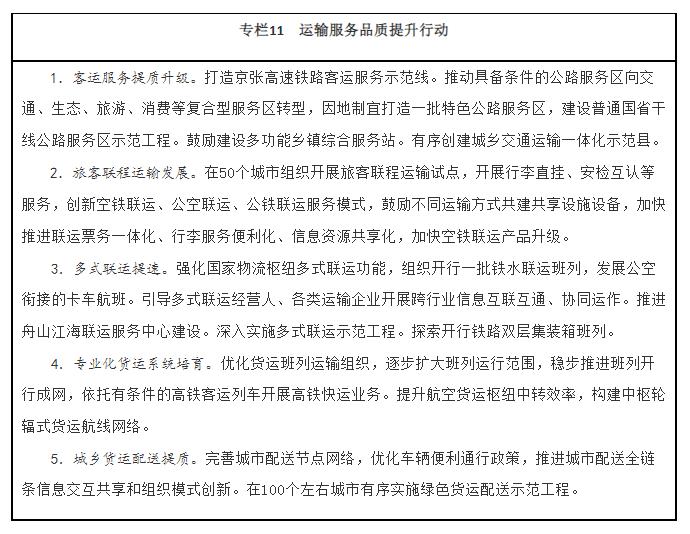
Chapter VII Accelerating the Deep Popularization and Application of Intelligent Technology
Adhere to innovation-driven development, promote the deep integration of new technologies such as the Internet, big data, artificial intelligence and blockchain with the transportation industry, promote the application of advanced technology and equipment, build an intelligent transportation system with ubiquitous interconnection, flexible coordination and global competitiveness, strengthen scientific and technological self-reliance, consolidate the foundation of innovation and development, and enhance the new kinetic energy of comprehensive transportation development.
Section 1 Promoting Intelligent Upgrading of Infrastructure
Improve the digital perception system of facilities. Promote the digital transformation and upgrading of existing facilities, and strengthen the synchronous planning and construction of new facilities and perception networks. Establish a facility operation state awareness system, strengthen the digital sensing monitoring coverage of important passages and hubs, and enhance the all-weather and full-cycle operation state monitoring and active early warning capabilities of key sections and important nodes.
Construct the information interactive network of facilities and equipment. Steadily promote the coverage of network communication facilities such as 5G, and improve the coverage, real-time and reliability of information transmission in the transportation field. Carry out 5G-based application scenarios and industrial ecological pilot demonstrations in the field of intelligent transportation. Promote the deployment and application of vehicle networking, and support the construction of an intelligent management system integrating "vehicle-road-traffic management". Create a new generation of rail transit mobile communication and aviation communication systems, study and promote the compatibility of multi-level rail transit signal systems, and simultaneously optimize the access conditions of mobile Internet such as trains and aircraft. Improve the information level of postal confidential communication.
Integrate and optimize the comprehensive transportation information platform. Improve the supervision service function of comprehensive transportation information platform, and promote the construction of autonomous driving supervision platform in qualified areas. Building a global shipping service network based on blockchain technology. Optimize and integrate the civil aviation data information platform. Improve the capacity integration capability of logistics information platform, strengthen smart cloud supply chain management and smart logistics big data application, and accurately match the supply demand. We will build an intelligent management platform for urban traffic in an orderly manner and strengthen the refined management of urban traffic.
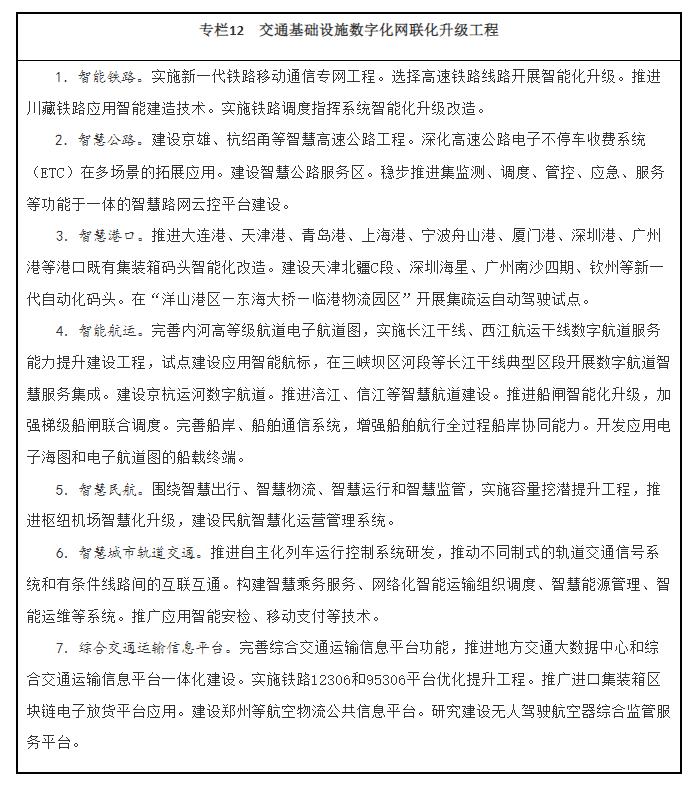
Section 2 Promoting the Application of Advanced Transportation Equipment
Promote the popularization and application of Beidou system. Improve the transportation Beidou system infrastructure, improve the Beidou ground-based enhanced network, and improve the Beidou short message service level. We will steadily promote the application of Beidou system in the fields of railways, highways, waterways, general aviation, urban public transportation, global maritime shipping, international road transportation, etc., promote the layout and construction of a train operation control system integrating Beidou technology, and carry out a demonstration of Beidou industrialization application in civil aviation.
Promote advanced and applicable transportation equipment. Develop and apply CR450 high-speed Chinese standard EMU and pedigreed China standard subway train, and popularize railway heavy-haul transportation technology and equipment. Improve the research and development capabilities of large LNG carriers, polar ships and large cruise ships, and promote the research and development of new equipment such as underwater robots, deep diving equipment, semi-submersible salvage cranes in the deep sea, and large-scale multifunctional rescue boats in the deep sea. Promote green smart ships, promote the application of single smart ship technology such as autonomous navigation of ships, and promote the overall technical application of shore-based collaborative systems, security systems and remote control systems for intelligent navigation of ships. Strengthen the capacity building of airworthiness certification, promote the demonstration operation of C919 passenger aircraft and the serial development of ARJ21 in regional aircraft, and promote the application of Xinzhou 700 regional aircraft, AG600 amphibious aircraft, heavy helicopters, plateau heavy-duty unmanned aerial vehicles, etc. Promote the development of intelligent warehousing and distribution facilities and equipment.
Improve the level of equipment standardization. Popularize the application of lightweight trailers, carry out special treatment of atmospheric liquid dangerous goods tankers, and steadily carry out the treatment of ultra-long flat semi-trailers and ultra-long container semi-trailers. Promote the standardization of inland river ship types, promote river-sea direct ship types, Three Gorges ship types, energy-saving and environmental protection ship types, and develop standard ship types for Yangtze River cruise ships. Promote the research and development of on-board rapid security inspection equipment. Consolidate and enhance the competitiveness of the whole industrial chain in the fields of high-speed rail and ships, and create China standards and China brands in the fields of rail transit, aerospace and other technical equipment.
Section III Innovating Operation Management Mode
Guided by meeting personalized and high-quality travel needs, we will promote the digitalization of the whole service process, support market players to integrate resources, provide "one-stop" travel services, and create a smoothly connected service chain. We will steadily develop travel services such as autonomous driving and vehicle-road coordination, encourage autonomous driving to test and apply in limited areas such as ports and logistics parks, and promote the development of intelligent public transport, intelligent parking and intelligent security inspection. Guide and standardize the healthy development of online car-sharing, bike-sharing, car time-sharing and online freight platforms to prevent disorderly expansion. Accelerate the development of "internet plus" efficient logistics new mode and new format. Strengthen high-definition observation of deep-sea targets and high-precision space-time services at sea. Improve the transportation government service and supervision ability, improve the digital and information supervision means, strengthen off-site supervision, credit supervision and joint supervision, and realize the nationwide networked operation of the supervision system.
Section IV Consolidate the Foundation of Innovation and Development
Promote transportation science and technology to stand on its own two feet. Strengthen the research and development of key core technologies in the field of transportation, accelerate the research and development of key components such as bearings, wire-controlled chassis, basic technology platform and software and hardware systems, and promote the realization of independent control and industrialization. Strengthen forward-looking and strategic technical research reserves in the field of transportation, strengthen technical research and development in the fields of intelligent networked vehicles, automatic driving, vehicle-road coordination, autonomous navigation of ships, and ship-shore coordination, and carry out research and demonstration of high-speed magnetic levitation technology. Strengthen the research and development of construction technologies such as lines, long-span bridges and super-long tunnels under complex environmental conditions and research and development of high-performance engineering materials. Strengthen the research and development of key technologies for high-lift and large-tonnage ship lifts.
Cultivate the ecological circle of traffic science and technology innovation. Promote the deep integration of politics and Industry-University-Research in the field of transportation. Encourage superior enterprises to integrate the resources of the transportation science and technology industry chain, cultivate the transportation science and technology industry ecosystem through open data, open platforms and open scenarios, and build a transportation science and technology industry incubator base. Strengthen the construction of key scientific research platforms in the industry, promote the construction of key laboratories and technological innovation centers, and cultivate national-level scientific and technological innovation bases.
Strengthen open sharing of data. Strengthen the classification management of transportation data. Further improve the open sharing mechanism and exchange channels of transportation data resources, formulate the open system norms of data resources, and promote the compliance, opening and sharing of mature data resources. Strengthen the safety control of transportation data, improve the safety protection system of data classification, formulate safety standards for intelligent transportation data application, standardize data source collection, processing and use, and strengthen the protection of important data and personal information.
Chapter VIII Promoting Green and Low-carbon Transformation in an All-round Way
Adhere to the Lucid waters and lush mountains are invaluable assets concept, adhere to the ecological priority, comprehensively promote the green and low-carbon transformation in the whole life cycle of transportation planning, design, construction, operation and maintenance, and jointly promote pollution reduction and carbon reduction to form a long-term mechanism for green and low-carbon development, so as to make transportation more environmentally friendly and travel more low-carbon.
Section 1 Optimizing and Adjusting the Transportation Structure
We will further promote the adjustment of transportation structure and gradually build a medium-and long-distance freight system based on railways and ships. Accelerate the construction of special railway lines, and promote the transportation of bulk goods and medium and long-distance goods "revolving iron" and "revolving water". Optimize the "door-to-door" logistics service network, encourage the development of intensive distribution modes such as joint distribution, unified distribution, centralized distribution and time-sharing distribution of urban and rural logistics, increase the proportion of green transportation of industrial and mining enterprises, and expand the supply of urban production and living materials by rail.
Section II Promotion of Low Carbon Facilities and Equipment
Plan to build a convenient, efficient and moderately advanced charging and replacing network, focus on promoting the construction of charging facilities and equipment in transportation hub stations, parking facilities, highway service areas and other areas, and encourage the rational layout of photovoltaic power generation and energy storage facilities along transportation hub stations, highways and railways. Promote the low-carbon and diversified development of transportation energy, actively promote new energy and clean energy transport vehicles, steadily promote the electrification of railways, promote inland river ships to use clean energy more, and further reduce the energy consumption of vehicles. We will continue to promote the construction of shore power facilities at ports and docks and alternative facilities for airport aircraft auxiliary power units, promote the transformation of ship power receiving facilities, and continuously improve the utilization rate of shore power.
Section III Strengthening Pollution Prevention and Control in Key Areas
Implement the system of ship air pollutant emission control zone. Promote the effective connection between the port receiving facilities of ship pollutants and urban public transshipment and disposal facilities, and improve the supervision system of electronic bills. Improve the long-term mechanism of pollution prevention and control of ships and ports in the Yangtze River Economic Belt. Carry out comprehensive treatment of sewage and dust in the port area, promote the recycling of production and domestic sewage and rainwater sewage, and improve the wind and dust suppression facilities in the dry bulk terminal yard. Carry out traffic noise pollution control, properly handle the noise impact of large airports, and actively eliminate existing noise pollution.
The fourth quarter comprehensively improve the efficiency of resource utilization
Promote the coordinated development of transportation and other infrastructure, and create a composite infrastructure corridor. Make overall and intensive use of comprehensive transportation corridor’s line location, bridge location, land, coastline and other resources to improve the comprehensive utilization rate of land space. Promote scientific route selection and site selection, popularize land-saving technology, strengthen soil erosion protection and ecological protection design, give priority to avoiding land space with important ecological functions or sensitive and fragile ecological environment, and try to avoid areas where noise-sensitive buildings are concentrated. Promote the reduction, standardization and recycling of express packaging. Promote the resource utilization of waste facilities and materials.
Section 5 Improve carbon emission control policies
Implement the green and low-carbon transformation of transportation. Study and formulate statistical methods and accounting rules for carbon emissions in the transportation field, strengthen basic statistical accounting for carbon emissions, establish a monitoring platform for carbon emissions in transportation, and promote the construction of near-zero carbon transportation demonstration zones. Establish a green and low-carbon transportation incentive and restraint mechanism, and classify and improve measures such as traffic management and parking management.
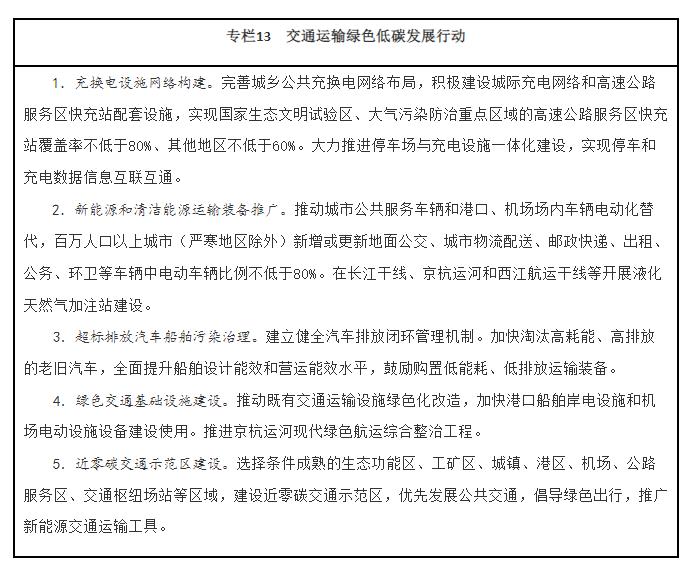
Chapter IX Enhancing the Ability of Safety Emergency Support
Adhere to the overall national security concept, implement the national security strategy, safeguard and shape national security, run safety development through all fields and links of comprehensive transportation, firmly hold the safety bottom line, lay a solid foundation for safety development, enhance the emergency support capability of emergencies, and build a national security barrier.
Section 1 Improving the Anti-risk Ability of Traffic Network
Strengthen the safety risk assessment and classified management and control of transportation infrastructure, strengthen the identification of major risk sources, dynamic monitoring and analysis of the whole process, forecast and early warning, build meteorological monitoring and early warning systems in important passages, hubs and shipping areas, and improve the ability of transportation infrastructure to adapt to climate change. We will steadily increase the multi-path connection ratio in key areas such as disaster-prone areas, major industries and energy bases, improve emergency traffic evacuation, rescue and refuge channel systems, and enhance the resilience of transportation networks. Strengthen the network security protection of key information infrastructure and important information systems in the transportation field, and promote the independent control of information system facilities and equipment.
Section 2 Maintenance of Intrinsic Safety of Facilities and Equipment
Establish and improve the infrastructure asset management system, strictly control the source quality of facilities and equipment products, reasonably arrange the construction period, and promote the construction of fine products and fine management. Strengthen the construction of traffic safety facilities, and promote the synchronous design, construction and operation of safety supporting facilities, key target prevention facilities and the main project. Strengthen the early warning and protection monitoring of high-speed railway combining civil air defense, physical defense and technical defense, and strengthen the construction of railway disaster prevention and insurance facilities. Standardize the setting of urban road traffic safety facilities and traffic management facilities. Focusing on water and cliffs, hidden danger intersections and traffic signs and markings, we will strengthen the investigation and rectification of hidden dangers in rural roads, bridges and tunnels and the supporting safety facilities. Improve the safety supporting facilities of water transport projects and the anti-collision facilities of bridges.
Section III Strengthening Safety Production Management
Improve the working mechanism of enterprise safety risk classification control, hidden danger investigation and management, technical investigation of accidents and major dangers, strengthen statistical analysis of production safety accidents, and strengthen supervision, inspection and law enforcement. Comprehensive use of scientific and technological means to carry out risk dynamic monitoring and early warning and analysis and judgment. Implement the main responsibility of enterprise safety production and strengthen the responsibility of safety production supervision and management. Strengthen the improvement of the safety environment along the railway, consolidate the whole chain management of civil aviation operation safety, strengthen the safety management of urban rail transit operation protection zones, and strengthen the safety supervision and emergency management of delivery channels. Strengthen the operation safety of facilities and equipment, improve the supervision mechanism of truck production and modification, and put an end to illegally modified freight vehicles leaving the factory. Strengthen the supervision of the source of cargo loading, and prohibit vehicles that are overloaded and overloaded from leaving the scene (station) to drive on the road. Improve the transportation network of dangerous chemicals, optimize transportation traffic control measures, and strengthen the traffic management of key parts such as ports, tunnels and dams. Optimize the working environment of professional drivers, couriers and crew members, and strengthen the quality management of motor vehicle driver training.
Section IV Strengthening Safety Emergency Support
Improve the comprehensive transportation emergency management system and mechanism, improve the emergency coordination mechanism and emergency plan system, and strengthen the construction of transportation dispatching and emergency command platform. Promote the construction of regional highway emergency equipment and materials reserve centers. Strengthen water traffic safety supervision, navigation support and salvage capacity building, improve coastal and inland oil spill emergency equipment libraries, and build a water traffic safety guarantee system integrating land, sea, air and space. Construction of urban rail transit emergency drill center. Constructing aviation emergency service network with backbone aviation logistics enterprises as the main body. Construction of maritime supervision and command system. Based on the investigation of hidden dangers of urban transportation infrastructure, such as underground space, low-lying areas, key sections, important points and key facilities, we will establish and improve risk accounts and lists of hidden dangers of disasters, fill in shortcomings such as facilities, equipment and emergency rescue materials, continuously improve emergency response plans, improve emergency response mechanisms, and enhance our ability to cope with extreme weather. Strengthen the construction of emergency professional team and volunteer team, and enrich the national emergency transportation reserve force. We will improve the non-traditional security emergency command system and emergency transportation organization to deal with major epidemics, prevent and respond to terrorist attacks, and ensure information security.
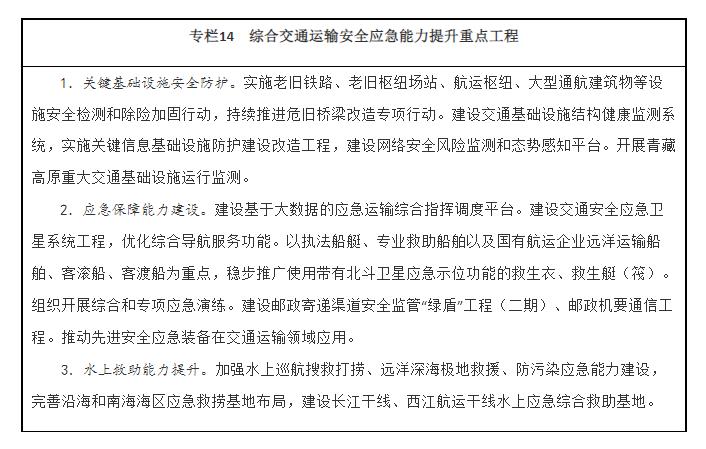
Chapter X Promoting High-level Opening-up Cooperation
Adhere to open cooperation, promote interconnection, strengthen "hard connectivity" of infrastructure and "soft connectivity" of institutional rules, ensure the safety of international logistics supply chain, improve the efficiency and level of domestic large-scale circulation, and shape new advantages in participating in international cooperation and competition.
Section 1 Promoting Infrastructure Interconnection
We will build an all-directional, multi-level and compound "Belt and Road" infrastructure network, actively promote infrastructure interconnection with neighboring countries, and promote the construction of port railways, port highways and boundary river waterways. We will strengthen the construction of large-scale land transport corridors facing Russia, Mongolia, Southeast Asia, South Asia and Central Asia, and support Tibet in building an important corridor open to South Asia. Further improve the maritime strategic channel, plan to build the Asia-Europe land and sea trade channel and the northeast land and sea trade channel, and fill the shortcomings of infrastructure along the route.
Section 2 Further Smooth International Transportation
Give full play to the demonstration effect of China-Singapore interconnection project, strengthen consultation and cooperation with neighboring countries, continuously promote the quality and efficiency of rail-sea intermodal transport in the new land-sea corridor in the west, and promote the development of cross-border trains. Optimize the network layout of international shipping routes, improve the efficiency of land-sea combined transport between China and South Korea, promote the healthy development of China-Europe land-sea express line, and expand the brand influence of "Silk Road Shipping". Stabilize the surrounding air transport markets such as Southeast Asia and Northeast Asia, expand the intercontinental route networks such as Europe, North America and Oceania in an orderly manner, and build the "Silk Road in the Air". We will steadily expand the scope of implementation of the agreement on facilitation of international road transport. Optimize the international combined transport organization and transit service, and improve the overseas transshipment service network.
Section III Promoting the High-quality Development of China-Europe Trains
Upgrade and transform the China-Europe train port and the rear "stuck neck" section, and speed up the upgrading of technical equipment and information construction. Accelerate the construction of China-Europe train assembly center, promote the unified waybill of China-Europe trains and the mixed transportation of domestic and foreign trade goods, improve the efficiency of supply assembly and train operation, and expand the scope of railway freight trains. Improve the evaluation system of China-Europe trains, improve the industry self-discipline mechanism, consolidate and maintain the brand image, and strengthen risk prevention and control. Promote the convergence and unification of international railway intermodal transport rules, explore the establishment of new rules for joint development with trade and finance, and promote the establishment of an intergovernmental cooperation mechanism between China and Europe.
Section IV Deepening Multi-field Exchanges and Cooperation
Actively integrate with international rules and standards, and coordinate and promote the docking of transportation tools, loading units, reloading and transshipment equipment, operation procedures, safety rules, service specifications, information data and other standards. Support enterprises to participate in the construction of transportation infrastructure and international transportation market cooperation along the "Belt and Road", and promote a new model of international capacity cooperation in the development and construction of transportation, industrial parks and cities. Establish China International Sustainable Transportation Innovation and Knowledge Center. Strengthen exchanges and cooperation in the fields of navigation support in the deep sea, search and rescue, automatic driving, scientific and technological talents, build a world-class ship inspection agency, and actively participate in the global governance of emission reduction in the international aviation and shipping industries.
Section 5 Ensuring the Security of International Logistics Supply Chain
Efforts will be made to form a transportation network with land, sea and air as a whole, strengthen supply and demand docking and capacity coordination, and enhance the national logistics supply chain support capability. Pragmatically promote cooperation with ASEAN countries and countries along important maritime routes, strengthen international maritime cooperation, cooperate with countries along the Maritime Silk Road to promote the construction and operation of overseas ports, build a modern ocean-going transport fleet, and maintain the safety and smoothness of important international maritime routes. Enhance the international air cargo capacity, improve the allocation efficiency of key resources such as air rights and time, support airlines to build an international cargo route network, build an aviation logistics enterprise with global competitiveness, and enhance the global response capability of aviation logistics. Cultivate and expand logistics enterprises with international competitiveness, and steadily promote the construction of overseas distribution centers and terminal delivery and distribution networks. Improve the information service level of international logistics supply chain, and do a good job of logistics information docking with foreign trade enterprises.
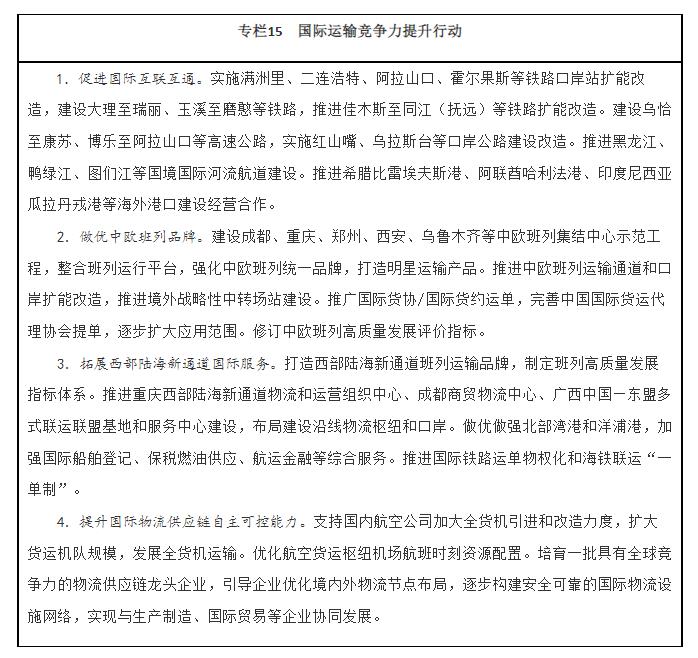
Chapter XI Strengthening the Construction of Modern Governance Capacity
Unswervingly push forward the reform, focus on the deep-seated contradictions that restrict the high-quality development of comprehensive transportation, optimize and improve the management system, operational mechanism, laws, regulations and standard system, build a high-level talent team, promote the modernization of governance capacity, and continuously enhance the development momentum and vitality of comprehensive transportation.
Section 1 Deepening the Reform of Key Areas
Further clarify the relationship between the government and enterprises in the railway industry, promote the market-oriented reform of competitive links in the railway industry, promote the independent construction and operation of intercity railways and municipal (suburban) railways in qualified places, promote the shareholding system reform of national railway enterprises and the listing of high-quality assets, and improve the rules for railway cost liquidation and income distribution. Promote the reform of highway toll collection system and maintenance system, and promote the differentiated toll collection of expressways. Continue to promote the reform of air traffic control system, improve the joint operation mechanism of military and civilian air traffic control, implement refined management of airspace resources classification, optimize the national air route network, and deepen the reform of low-altitude airspace management. Realize the separation of postal universal service business and competitive business. Study and improve the shipping management system and mechanism of Xijiang shipping trunk line and boundary river. Deepen the reform of comprehensive administrative law enforcement in transportation. Build a full-factor water traffic management system, optimize and improve the maritime supervision mechanism and mode.
Section 2 Promoting the Formation of a Unified Open Market
Establish and improve the integrated development mechanism of transportation in urban agglomerations. We will implement a fair competition review system and standardize subsidy policies for China-Europe trains, ports and airlines, and international civil aviation routes. Establish a new supervision mechanism based on credit, strengthen the disclosure of credit information sharing, risk monitoring and safety management, and promote credit commitment in advance, credit evaluation and classification supervision in the process, reward and punishment afterwards and credit repair. Explore the establishment of a fault-tolerant system for innovative development of transportation. Standardize the price management of new transportation formats and new modes, improve the price formation mechanism of cruise taxis, and deepen the market-oriented reform of road passenger transport prices.
Section III Innovation of Investment and Financing System and Mechanism
We will fully implement the reform plan for the division of financial powers and expenditure responsibilities between the central and local governments in the field of transportation, optimize the debt structure, and prevent and resolve the hidden debt risks of local governments. Improve the long-term financing channels that match the project funding needs and deadlines. We will stabilize and improve the policy of special funds for transportation, continue to support the maintenance of transportation infrastructure through the reform of taxes and fees for refined oil, transfer payments and other channels, and optimize and improve the financial policies to support the development of postal services and water transport. Improve the special bond system for toll roads. Support qualified project implementers to carry out market-oriented financing by issuing corporate bonds and other means, steadily promote the pilot of real estate investment trusts (REITs) in infrastructure, standardize the development of cooperation mode between government and social capital, support development finance, policy finance and social capital to participate in transportation infrastructure construction according to laws and regulations, and encourage social capital to set up industrial investment funds such as multimodal transport. Relying on the national online approval and supervision platform for investment projects, we will strengthen post-event supervision.
The fourth quarter to improve laws, regulations and standards.
Accelerate the construction of laws, regulations and standard systems that adapt to the modern comprehensive transportation system. Study and revise laws and regulations related to highways, railways, civil aviation and comprehensive transportation, and promote the effective connection of various systems. We will build a high-quality development standard system and statistical system for comprehensive transportation, improve technical standards such as comprehensive transportation hub, passenger joint transportation, multimodal transport of goods, intelligent transportation, green transportation, traffic safety emergency, barrier-free transportation, new formats and new models, and strengthen the convergence of various standards. Promote the integration of dangerous goods multimodal transport service rules and mutual recognition of test results. Strengthen quality and technical infrastructure such as measurement, standards, certification and accreditation, inspection and testing, and strengthen quality supervision and management.
Section 5 Strengthening the Construction of Talent Team and Traffic Civilization
We will build a new think tank alliance for transportation, optimize the leading talent discovery mechanism and project team selection mechanism, deepen the reform of scientific research fund management, improve the talent evaluation system, vigorously train and use strategic scientists, and create a large-scale team of young scientific and technological talents. Strengthen the cultivation of innovative, applied and skilled talents, expand the team of high-skilled talents and train a large number of outstanding engineers. Strengthen the construction of soft power of transportation culture, promote the construction of excellent transportation culture projects, deepen the construction of transportation cultural projects, and improve the civilized quality of transportation participants. Strengthen the construction of all-media communication ability of transportation, and enhance the communication, guidance, influence and credibility of transportation government media. Further strict discipline, improve work style, improve the ability and level of transportation law enforcement team, and strictly regulate fair and civilized law enforcement. Innovate the new mechanism and method of publicity and education on the rule of law, implement the responsibility system of popularizing law, and cultivate the culture of traffic rule of law.
Chapter XII Strengthening the Guarantee of Planning Implementation
Adhere to the party’s overall leadership over the development of transportation, strengthen organization and coordination, factor support, supervision and guidance, give play to the role of pilot demonstration, and ensure the strong, orderly and effective implementation of the plan.
Section 1 Strengthening the Party’s Overall Leadership
Insist on arming the minds of party member cadres with Socialism with Chinese characteristics Thought of the Supreme Leader in the New Era, conscientiously implement the decision-making arrangements of the CPC Central Committee and the State Council, strengthen the "four consciousnesses", strengthen the "four self-confidences" and achieve the "two maintenance". Give full play to the party’s core role of commanding the overall situation and coordinating all parties, and strengthen the party’s leadership in all fields, aspects and links of transportation development. Strengthen the construction of grass-roots party organizations in the transportation industry, guide party member to play a vanguard and exemplary role, and build grass-roots party organizations into a strong fighting fortress for the development of a strong transportation country.
Section 2 Strengthening Organization and Coordination
All relevant departments should improve their ideological understanding, improve supporting policies and measures in accordance with the division of responsibilities, strengthen departmental coordination, strengthen the linkage between the upper and lower levels, do a good job in linking this plan with the outline of the national economic and social development plan and the planning of land space and river basin integration, do a good job in linking and implementing special plans such as railways, highways, water transport, civil aviation and postal services with this plan, and solidly promote the construction of major projects. Local people’s governments at all levels should closely combine the actual development, refine the main objectives and key tasks determined in this plan, and do a good job in the implementation of the local comprehensive transportation development plan and this plan.
Section III Promoting Pilot Demonstration
Focusing on first-class facilities, first-class technology, first-class management and first-class service, we will promote the pilot demonstration of building a strong transportation country in an orderly manner in terms of optimal allocation of resources in cross-regional comprehensive transportation corridors, new infrastructure in the transportation field, international comprehensive transportation hub clusters, urban agglomeration and urban-rural transportation integration, high-quality development of "four good rural roads", integrated development of transportation and tourism, standardization of facilities and equipment service management, reform and model innovation of investment and financing system, construction of international logistics supply chain and development of green and low-carbon transportation, and establish and improve it.
Section IV Strengthening Factor Guarantee
Strengthen the financial policy guarantee, arrange government investment to actively support the construction of transportation infrastructure, and include qualified projects in the scope of local government bond support. Increase investment in conservation funds, fully guide diversified capital to participate in transportation development, and form a sustainable capital investment mechanism that pays equal attention to construction and maintenance. Explore diversified support policies such as comprehensive development of hub land. Improve the coordinated promotion mechanism of major projects across departments and regions. Make good use of the cross-regional co-ordination mechanism for supplementary cultivated land, strengthen the protection of resource elements such as land use, sea use and energy use for key projects, and do a good job in the reservation and supply of resource elements.
Section 5 Do a good job in supervision and guidance
Establish and improve the evaluation system for major planning, major policies and major projects in the field of transportation, and carry out social stability risk assessment for major decisions as required. Strengthen post-event supervision and dynamic monitoring and analysis during the implementation of the plan, carry out mid-term evaluation and post-evaluation of construction projects in a timely manner, supervise and guide the implementation of the plan, and make dynamic adjustments when necessary to ensure the effectiveness of the plan.

























